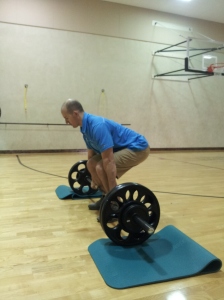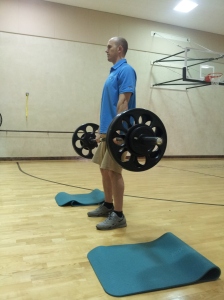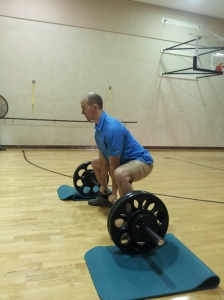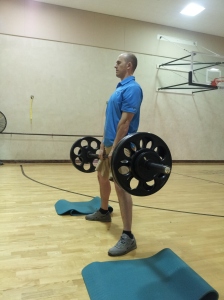Rack Chat: Sumo vs. Conventional Deadlift
In this installment of Rack Chat, I will decipher the difference between the sumo and conventional deadlift, and why this actually matters. The two deadlifts are fairly similar, pick the bar up off floor and place it back down, that is the deadlift in a nutshell. The major difference in the two is the set-up, biomechanics in the execution, and the dominant muscles involved. In my opinion, one is not better than the other, rather, either lift could be beneficial to different types of lifters (i.e. short, tall, long legs, long arms, stronger hips, stronger hams, etc.). I perform both lifts because I think each serves an important purpose in my programming. I am as “strong” on both, but I enjoy working the sumo more because of the fact that my low back feels better when performing. I went ahead and bullet pointed the the more interesting differences below for each lift, enjoy!!
Conventional Deadlift:
- Hips farther from bar
- Torso is more horizontal (more load on low back)
- Hips might start in a higher position (depends on flexibility)
- More hamstring dominant (requires more hip mobility)
- More load on lower back (lumbar and sacrum)
- Grip outside of legs
- More shearing forces on lumbar spine
Sumo Deadlift:
- Hips are closer to bar
- Torso position is more vertical (less load on low back)
- Hips start in lower position (may get lower depending on width of stance)
- More load on hips and adductors (requires more groin flexibility)
- Less load on low back (might be better for those with low back issues)
- Grip inside of legs
- Less shearing forces on lumbar spine
Posted on December 30, 2013, in Coaching, Powerlifting, Rack Chat, Strength Training and tagged back squat, bench press, Compound Exercises, deadlift, front squat, olympic weightlifting, powerlifting, Rack Chat, Strength Training. Bookmark the permalink. 9 Comments.




Well written article! And nice lifts! I love the sumo deadlift as a deadlift assistance exercise. I have long arms and short torso so i’m always going to be a better conventional puller but my legs are the weak link and the sumo targets this nicely. Also find them very useful for use with clients who have cranky lower backs but still need the training effect of heavy pulls.
Hi Nick,
Thanks for the positive feedback!! Yeah, I am not exactly that strong on these lifts (in comparison to some) but continue to iron out the kinks as I age and become more familiar with the movement. I really just enjoy sumo more but definitely dabble with both. I am starting to fall into the “cranky lower back” syndrome for whatever reason (tight hamstrings, soft bed) so sumo has been a way to avoid possible injury to that area. Again, thanks for the feedback and I am glad you enjoyed reading.
Not a problem. In my opinion sumo is probably the way to go in that case. Yeah lower back pain is often associated with tight hamstrings and glutes or lack of t-spine mobility so might be worth doing some work in these areas. Have also seen mobility work in these areas help get people into better anatomical positions in the sumo and lift bigger weights. Enjoy reading your stuff very much. And thanks for checking out my blog too.
Absolutely, will be definitely keeping up to date with the material you post for sure. Where are you located if you don’t mind me asking?
Am in London, England at the moment. Hoping to move stateside this year or next to work and do my NSCA qualifications tho. You based in the US?
Gotcha, I got the feel that you were in CA but that may have been based on the pics and vids. I am in San Diego, and ironically work as a director at a private golf club…not a golfer…in the fitness side of course.
The pics and vids are generally not mine tbh, i know a few guys who have interned at cressey performance and a few other places and that stuff quite often theres or just straight from stockshare. Oh cool…of course! How big is the fitness side of operations at your club? Wouldn’t want to clog up your comment stream too much, so do you mind if i send you an e-mail?
NSCA is definitely a gold standard in regards to certs. I did the CSCS a few years back and it was tough!!
Yeah that is a big part of my thinking. Have heard its tough!